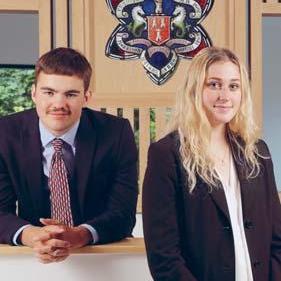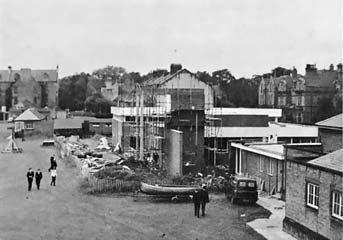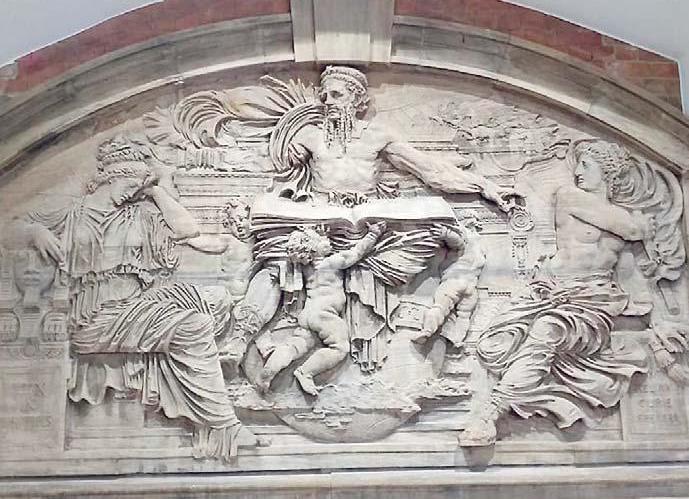
4 minute read
WILLIAM ARMSTRONG DOMINIQUE HEWITSON & THEO HOULT
WILLIAM ARMSTRONG
BY DOMINIQUE HEWITSON AND THEO HOULT
Advertisement
The ONA is now fortunate in having two School Ambassadors, as reported in the last issue of ONA Magazine. They are Upper Sixth Form students Dominique Hewitson and Theo Hoult and in this issue, they write on Britain’s sometimes forgotten hero, William Armstrong, Baron Armstrong of Cragside.
Lord Armstrong confirmed as Old Novo
William Armstrong features in the old School Song, first sung in 1913 but now restricted to ONA Dinners, still remembered with nostalgia by hundreds of current ONs. ‘…Collingwood, Armstrong, Eldon and Bourne, Akenside, Stowell and Brand…’
But doubt arose over the last century whether Armstrong actually did attend the School. For some time, I have attempted to uncover this mystery and during recent weeks, another RGS mystery appears to have been laid to rest. An entry in NOVO (Dec.1886), in its second year of publication mentions his attendance with pride.
Henrietta Heald is the author of the authoritative biography William Armstrong, Magician of the North (2010). I contacted Henrietta recently with this ‘evidence’ and she replied: “You have the strongest evidence there is that Armstrong attended RGS. The school would not have publicly claimed him as an old boy while he was still alive if he had not been one… the estimable Alice Short, who wrote an (unpublished) PhD thesis on Armstrong’s contribution to science and education, fails to mention his attendance at the Grammar School. However, she draws an illuminating picture of the Grammar School at the time Armstrong would have been a pupil there (c.1820) Clearly, it was not the school’s finest hour! In 1820 it had only nine pupils and was embarking on a major structural change. It would not have provided the kind of education that the ambitious Armstrongs were looking for. Indeed, there were no schools at the time that met their exacting standards – though it’s surprising that, apparently, William Armstrong didn’t attend Bruce’s Academy. I suspect that he had brief spells at a number of schools in Newcastle, including RGS, before going to Bishop Auckland – but that none of them satisfied expectations.”
The Editor
WILLIAM ARMSTRONG
(1810-1900)
RGS students, during their commute to school, will often catch sight of the City’s iconic Swing Bridge, though it wasn’t until recently that it was confirmed that it had been built by an Old Novocastrian, William Armstrong. Having been referred to as ‘Britain’s forgotten genius’, most of us will be familiar with his work, especially Newcastle University which he founded; however, most people are unaware of how much of an impact he had on the North East as well as in technology in general. Joining the school in the 1820s, we believe he attended the RGS until the age of 16. His father aspired for Armstrong to practice law in the future. After leaving RGS, he was articled to the Newcastle lawyer Armorer Donkin, after which he spent five years in London studying law. He moved back to Newcastle in 1833 and ultimately made his home in what is now Jesmond Dene.
Despite working for 11 years as a solicitor, Armstrong continually showed a keen interest in engineering, developing in the 1840s what is now known as the Armstrong Hydroelectric Machine. His work designing a rotary wheel, powered by water, was met with little interest and this led him to develop a piston engine which he believed could be used to drive a hydraulic crane. Armstrong’s work came to public light during a scheme to provide piped water to households in Newcastle when he proposed his cranes as a cheaper and faster method to standard cranes. His cranes were so successful that three were constructed along the Quayside. His work in engineering was officially recognised in 1846 when he was elected a Fellow of the Royal Society. All the success associated with his crane made Armstrong resign from his legal practice and set up W.G. Armstrong & Company along the River Tyne in Elswick.
Armstrong continued on his innovative trajectory, next designing new weaponry, for the British army to use during the Crimean War, that which was said to be superior to all other contemporary designs. However, rather than profit from such an incredible invention, Armstrong surrendered the patent to the British Government, in return earning him the title of Knight Bachelor. Delving into the creation of armaments led Armstrong to create a separate company, then known as the Elswick Ordnance Company, to ensure he would not suffer from a conflict of interests if his own company were to create weaponry. This company however was later reabsorbed into W.G. Armstrong & Company when Armstrong was allowed by the British Government to sell arms to overseas powers, creating the newly, and very inventively named, Sir W.G. Armstrong & Company.
In his later life, Armstrong lived in the expansive Cragside Estate, where his house was the first ever building powered by hydroelectricity, generated by five man-made lakes constructed around the property. Armstrong passed away within Cragside at the age of 90 and was buried next to his wife in the Rothbury Churchyard.
We strongly believe in the importance of remembering Armstrong and the immense impact he had on the people and city of Newcastle, and on the North East as a region. This impact can be seen throughout the area; in Jesmond Dene, which Armstrong gifted to the city, along the Tyne, where the Swing Bridge is still used to this day, to the City’s leading hospital, the RVI co-funded by Armstrong and even as far away as the village of Bamburgh, with the restoration of the castle being Armstrong’s final project. What an indelible mark this Old Novo made on our City, and which we still experience in our lives today.
Dominique Hewitson and Theo Hoult
Current Upper Sixth Form students











